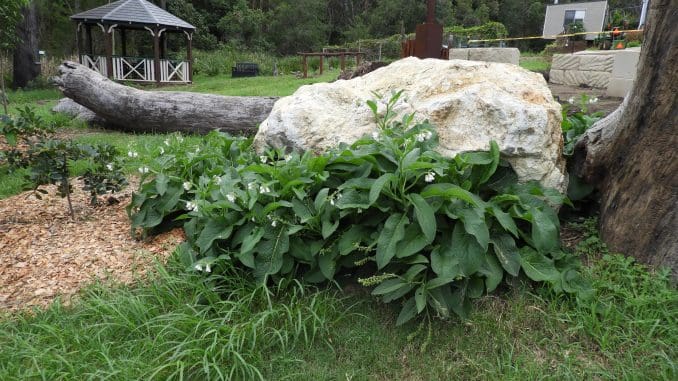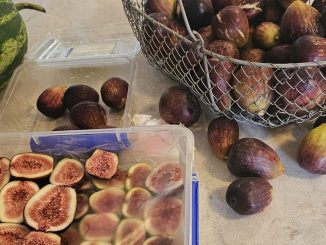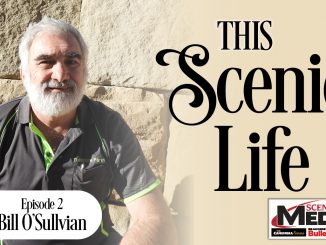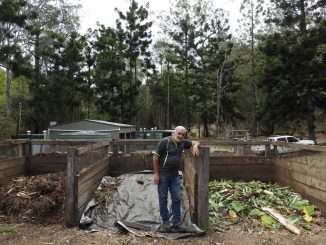
We don’t just grow fruit and vegetables here at Tullamore Farm.
We also grow a lot of support plants that are sacrificed to be used as mulch and for compost like Arrowroot, Pigeon Pea, Cassava, Bana Grass and others.
One of our favourites though is Comfrey.
It is a very special plant in that it also has many healing properties.
In medieval times it was referred to as Knitbone. Our chooks and horses like it also but that is a discussion for a future article.
We have hundreds of Comfrey plants here and the photo attached shows they are not large but they have very deep tap roots which allows them to bring a lot of minerals and nutrients to the surface.
When harvesting, we just cut all the leaves off, reducing the plant back to close to ground level.
Within days it is back sprouting and each plant grown here probably gets harvested five or six times per year.
Tests in the UK show that one plant can provide five and a half kilos of usable leaf mass per year. We think it is more than that here.
When harvesting I tend to use gloves as the leaves have really fine hairs which can be a bit itchy.
Comfrey is wonderful in compost.
Besides being full of minerals and useful nutrients it is an accelerator; it breaks down quickly helping to heat the compost pile.
We also use it as chop and drop by simply spreading the chopped off leaves under fruit trees as a mulch.
We have Comfrey growing along garden borders and under fruit trees and particularly along the drip line where it will suppress weeds.
It is quite lush and attractive and has attractive white and purple flowers.
The minute they start to flower we harvest because they stop growing. We want all those wonderful green leaves!
Our Native Bees and European Bees have plenty of other tucker here.





